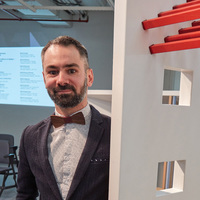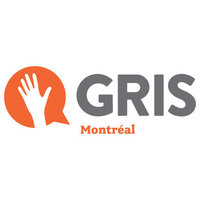
Kevin Lavoie
Address: École de travail social et de criminologie
Faculté des sciences sociales, Université Laval
Pavillon De Koninck, local 6439
1030, avenue des Sciences-Humaines
Québec (Québec) G1V 0A6
Faculté des sciences sociales, Université Laval
Pavillon De Koninck, local 6439
1030, avenue des Sciences-Humaines
Québec (Québec) G1V 0A6
less
Related Authors
Amélie Charbonneau
Université Laval
Olivier Vallerand
Université de Montréal
Line Chamberland
Université du Québec à Montréal
Bruno Laprade
Université du Québec à Montréal
InterestsView All (16)








Uploads
Papers by Kevin Lavoie
documentant les relations entretenues entre les mères lesbiennes, leur donneur, mais également les enfants issus de ses dons. Quatre rôles endossés par le donneur se dégagent en fonction de la proximité établie avec les mères et de la relation entretenue ou non avec l’enfant au fil du temps : 1) une « quasi » coparentalité planifiée ; 2) un donneur considéré comme un père par une partie de la famille ; 3) un donneur « proche » ou 4) un donneur « distant », voire inconnu.
Crossed views of mothers, donors and children of lesbian families in France
[Abstract] In France, most lesbian mothers turn to medically assisted reproduction to start a family. However, a number of them use a “known donor”, i.e. a close male who agrees to make a sperm donation to help them to become mothers without claiming legal paternity. This paper explores this family configuration by documenting the relationships between lesbian mothers, their donors, but also the children born
from their donations. Four roles for the donor emerge depending on the proximity established with the mothers and the relationship with the child over time: 1) a “quasi” co-parent relationship; 2) a donor considered as a father by a part of the family; 3) a “close” donor or 4) a “distant” donor, or even unknown.
the role played by men taking part as known donors in the
parental project of lesbian mothers in the province of Quebec,
Canada. Thirty-six individuals were interviewed: 10 female
couples, 11 donors, and 5 of the donors’ life partners. The results
show that the donors’ contribution takes place within a
deliberative process during which the adults involved discuss 5
elements, namely (a) the procreation method selected, (b) the
issue of future donations, (c) the forms of address and the role
of the donor in the life of the children issuing from his
donations, (d) the possible involvement of the donor’s loved
ones in the life of the lesbian-parent family, and (e) responses to
various scenarios that might arise in the future. The negotiation
also addresses concerns that those involved might have
regarding the children’s needs, resulting in a complex web of
interpersonal relationships. Our findings show that dialogue is
the key unifying factor, ensuring that everyone is in agreement
and that the donor’s role with respect to the child is in line with
the expectations of everyone involved.
L'article compare l'évolution des attitudes des jeunes rencontrés par le GRIS-Montréal, un organisme qui lutte contre l'homophobie et favorise, par le témoignage, une meilleure connaissance des réalités homosexuelles et bisexuelles en milieu scolaire. Quatre temps de mesure échelonnés entre 2001 et 2017 ont permis de dépouiller 7 122 questionnaires remplis par des élèves du secondaire âgés de 12 à 18 ans (moyenne de 15 ans). Les résultats montrent d'abord qu'un plus grand nombre d'élèves mentionnent aujourd'hui des attirances sexuelles autres que seulement pour le genre opposé. Ils montrent ensuite une évolution positive sur quinze ans des niveaux d'aise des jeunes pour l'ensemble des dimensions étudiées à l'aide du questionnaire. Toutefois, si les niveaux d'aise par rapport à la plupart des dimensions augmentent alors que les jeunes avancent vers l'âge adulte, avec un changement particulier entre 14 et 15 ans, le niveau d'aise par rapport aux droits des personnes gaies et lesbiennes diminue avec l'âge chez les jeunes rencontrés. De plus, alors que le niveau d'aise par rapport aux lesbiennes n'est pas affecté par le genre des répondants, le niveau d'aise par rapport aux gais est significativement plus petit chez les garçons. L'article se termine en discutant la nécessité pour le GRIS-Montréal de répondre aux besoins des jeunes quant à leurs conceptions de plus en plus sophistiquées de l'orientation sexuelle et du genre, ainsi que les défis que posent de tels changements. Mots-clés : diversité sexuelle, école secondaire, témoignage, attitudes, Québec
GRIS-Montréal: A Witness and Contributor to Secondary Students’ Changing Attitudes to Sexual Diversity
Our article explores changing attitudes among students who attend workshops offered by GRIS-Montréal, an organization dedicated to fighting homophobia and to raising awareness of the realities faced by homosexuals and bisexuals in the school system. In the context of four separate surveys conducted between 2001 and 2017, secondary students between the ages of 12 and 18 (average age of 15) completed 7,122 questionnaires. To begin with, the results show that a larger number of students now acknowledge feelings of sexual attraction other than those for the opposite sex. Furthermore, over the course of 15 years, young people have grown increasingly comfortable with all of the issues raised by the questionnaire. But although comfort levels with most issues increase during the transition to adulthood, with a particular change occurring between the ages of 14 and 15, comfort levels with gay and lesbian rights actually decrease with age. And while the gender of the respondents does not affect comfort levels with lesbians, boys are significantly less comfortable with gay men. The article concludes by discussing the essential role of GRIS-Montréal in addressing the needs of young people with respect to increasingly sophisticated conceptions of sexual orientation and gender, as well as the challenges posed by these changes.
Keywords: sexual diversity, secondary school, testimonials, attitudes, Quebec
Mots-clés : homosexualité, bisexualité, intervention, homophobie, hétérosexisme, éducation, Montréal
For more than 20 years, GRIS-Montréal (Groupe de recherche et d’intervention sociale) has been dedicated to demystifying homosexuality and bisexuality through workshops in schools of Montreal and surrounding areas. Its 20th anniversary is a good opportunity to proceed to a critical assessment of its activities. Three challenges are discussed in this article: the impact of religious discourse on workshops’ reception, the importance of deconstructing gender roles in the fight against homophobia, lesbophobia and biphobia, and the taboo surrounding discourses on sexuality.
Keywords: homosexuality, bisexuality, intervention, homophobia, heterosexism, education, Montreal
Mots-clés : violence entre partenaires, homosexualité, homme gai, représentations sociales, Belgique
This paper presents the results of a study aiming to document the social representations of violence between homosexual partners in the French Community of Belgium with two groups of social actors concerned by the problem. Twelve people were interviewed: six gay men and six social practitioners from associations dedicated to sexual diversity. Data being analysed using the two-dimensional theoritical model developed by Moliner, allowed to identify emotional, normative, and pragmatic reactions in regard to the phenomenon. The results show that violence among male partners is a hidden facet of intimate relationships and a taboo within the gay community, which leads participants to reflect on their conceptions of conjugality and power relations between homosexuals. Some factors that promote or inhibit the aid application of gay men are identified, as well as predisposition to intervention in community organizations dedicated to them.
Keywords: intimate partner violence, homosexuality, gay men, social representations, Belgium
This paper presents the negotiation framework concerning the place of men involved in lesbian mother’s parental project as known donors in Quebec. Thirty-two people were interviewed, nine women couples and ten donors, as well as four partners of these men. The results show that the donation is part of a negotiated approach, at the junction on three considerations identified as influencing factors: prior thoughts of mothers about their perceptions of fatherhood and the required commitment from the donor, singular expectations driving these men to participate in a consented way to the parental project of others and, in some cases, how their partner grasps the potential impacts of this gift on family and conjugality life. This negotiation also crossed concerns expressed by these adults towards children’s needs, forming a complex web of relationships. The dialogue seems to be the guarantor of cohesion between the people involved, while facilitating the emergence in the donor’s role towards the child that meets the expectations of them all.
This article presents the findings of a study aimed at better understanding the perspective and experience of men who donate sperm to help others start a family. The article is based on qualitative data drawn from two collections of interviews of men who had donated sperm to lesbian couples, either as part of a pre-existing relationship with the women (n = 10) or as part of an agreement stemming from an initial contact over the Internet (n = 8). The findings suggest the need for a more nuanced conception of their participation in the family plans of others. Not only do these men view this altruistic gesture with a significant sense of accomplishment, but the chosen method of procreation is part of a consensual and transparent process that meets the needs of those involved and their respective motivations.
Over the last thirty years, many researchers and practitioners have focused on the experience of sexual minorities youth, particularly in regard to the disclosure of their sexual orientation and its implications for their physical and mental health. However, few studies have explored the perspective of parents of a gay or lesbian child. The main objective of this article is to review the state of knowledge about the unique experience of these parents, in terms of the diversity of their reactions to the coming out of their child’s homosexuality and the emergence of their new parental and spousal identity. This is part of an effort to gain an understanding and a critical analysis of this phenomenon, in addition to documenting the psychosocial and community practices developed for those parents.
Since 2009, the LGBT Family Coalition offers a workshop and resource kit called A Look at Homoparental Families. The goal is to increase the visibility and social recognition of families with gay and lesbian parents in Québec. This knowledge transfer project is an initiative of university, school and community partners. The current article presents the social context underlying the project, as well as the scientific bases and pedagogical methods used to sensitize and empower professionals working in the health, education and social services sectors. Challenges encountered on the terrain are also broached.
documentant les relations entretenues entre les mères lesbiennes, leur donneur, mais également les enfants issus de ses dons. Quatre rôles endossés par le donneur se dégagent en fonction de la proximité établie avec les mères et de la relation entretenue ou non avec l’enfant au fil du temps : 1) une « quasi » coparentalité planifiée ; 2) un donneur considéré comme un père par une partie de la famille ; 3) un donneur « proche » ou 4) un donneur « distant », voire inconnu.
Crossed views of mothers, donors and children of lesbian families in France
[Abstract] In France, most lesbian mothers turn to medically assisted reproduction to start a family. However, a number of them use a “known donor”, i.e. a close male who agrees to make a sperm donation to help them to become mothers without claiming legal paternity. This paper explores this family configuration by documenting the relationships between lesbian mothers, their donors, but also the children born
from their donations. Four roles for the donor emerge depending on the proximity established with the mothers and the relationship with the child over time: 1) a “quasi” co-parent relationship; 2) a donor considered as a father by a part of the family; 3) a “close” donor or 4) a “distant” donor, or even unknown.
the role played by men taking part as known donors in the
parental project of lesbian mothers in the province of Quebec,
Canada. Thirty-six individuals were interviewed: 10 female
couples, 11 donors, and 5 of the donors’ life partners. The results
show that the donors’ contribution takes place within a
deliberative process during which the adults involved discuss 5
elements, namely (a) the procreation method selected, (b) the
issue of future donations, (c) the forms of address and the role
of the donor in the life of the children issuing from his
donations, (d) the possible involvement of the donor’s loved
ones in the life of the lesbian-parent family, and (e) responses to
various scenarios that might arise in the future. The negotiation
also addresses concerns that those involved might have
regarding the children’s needs, resulting in a complex web of
interpersonal relationships. Our findings show that dialogue is
the key unifying factor, ensuring that everyone is in agreement
and that the donor’s role with respect to the child is in line with
the expectations of everyone involved.
L'article compare l'évolution des attitudes des jeunes rencontrés par le GRIS-Montréal, un organisme qui lutte contre l'homophobie et favorise, par le témoignage, une meilleure connaissance des réalités homosexuelles et bisexuelles en milieu scolaire. Quatre temps de mesure échelonnés entre 2001 et 2017 ont permis de dépouiller 7 122 questionnaires remplis par des élèves du secondaire âgés de 12 à 18 ans (moyenne de 15 ans). Les résultats montrent d'abord qu'un plus grand nombre d'élèves mentionnent aujourd'hui des attirances sexuelles autres que seulement pour le genre opposé. Ils montrent ensuite une évolution positive sur quinze ans des niveaux d'aise des jeunes pour l'ensemble des dimensions étudiées à l'aide du questionnaire. Toutefois, si les niveaux d'aise par rapport à la plupart des dimensions augmentent alors que les jeunes avancent vers l'âge adulte, avec un changement particulier entre 14 et 15 ans, le niveau d'aise par rapport aux droits des personnes gaies et lesbiennes diminue avec l'âge chez les jeunes rencontrés. De plus, alors que le niveau d'aise par rapport aux lesbiennes n'est pas affecté par le genre des répondants, le niveau d'aise par rapport aux gais est significativement plus petit chez les garçons. L'article se termine en discutant la nécessité pour le GRIS-Montréal de répondre aux besoins des jeunes quant à leurs conceptions de plus en plus sophistiquées de l'orientation sexuelle et du genre, ainsi que les défis que posent de tels changements. Mots-clés : diversité sexuelle, école secondaire, témoignage, attitudes, Québec
GRIS-Montréal: A Witness and Contributor to Secondary Students’ Changing Attitudes to Sexual Diversity
Our article explores changing attitudes among students who attend workshops offered by GRIS-Montréal, an organization dedicated to fighting homophobia and to raising awareness of the realities faced by homosexuals and bisexuals in the school system. In the context of four separate surveys conducted between 2001 and 2017, secondary students between the ages of 12 and 18 (average age of 15) completed 7,122 questionnaires. To begin with, the results show that a larger number of students now acknowledge feelings of sexual attraction other than those for the opposite sex. Furthermore, over the course of 15 years, young people have grown increasingly comfortable with all of the issues raised by the questionnaire. But although comfort levels with most issues increase during the transition to adulthood, with a particular change occurring between the ages of 14 and 15, comfort levels with gay and lesbian rights actually decrease with age. And while the gender of the respondents does not affect comfort levels with lesbians, boys are significantly less comfortable with gay men. The article concludes by discussing the essential role of GRIS-Montréal in addressing the needs of young people with respect to increasingly sophisticated conceptions of sexual orientation and gender, as well as the challenges posed by these changes.
Keywords: sexual diversity, secondary school, testimonials, attitudes, Quebec
Mots-clés : homosexualité, bisexualité, intervention, homophobie, hétérosexisme, éducation, Montréal
For more than 20 years, GRIS-Montréal (Groupe de recherche et d’intervention sociale) has been dedicated to demystifying homosexuality and bisexuality through workshops in schools of Montreal and surrounding areas. Its 20th anniversary is a good opportunity to proceed to a critical assessment of its activities. Three challenges are discussed in this article: the impact of religious discourse on workshops’ reception, the importance of deconstructing gender roles in the fight against homophobia, lesbophobia and biphobia, and the taboo surrounding discourses on sexuality.
Keywords: homosexuality, bisexuality, intervention, homophobia, heterosexism, education, Montreal
Mots-clés : violence entre partenaires, homosexualité, homme gai, représentations sociales, Belgique
This paper presents the results of a study aiming to document the social representations of violence between homosexual partners in the French Community of Belgium with two groups of social actors concerned by the problem. Twelve people were interviewed: six gay men and six social practitioners from associations dedicated to sexual diversity. Data being analysed using the two-dimensional theoritical model developed by Moliner, allowed to identify emotional, normative, and pragmatic reactions in regard to the phenomenon. The results show that violence among male partners is a hidden facet of intimate relationships and a taboo within the gay community, which leads participants to reflect on their conceptions of conjugality and power relations between homosexuals. Some factors that promote or inhibit the aid application of gay men are identified, as well as predisposition to intervention in community organizations dedicated to them.
Keywords: intimate partner violence, homosexuality, gay men, social representations, Belgium
This paper presents the negotiation framework concerning the place of men involved in lesbian mother’s parental project as known donors in Quebec. Thirty-two people were interviewed, nine women couples and ten donors, as well as four partners of these men. The results show that the donation is part of a negotiated approach, at the junction on three considerations identified as influencing factors: prior thoughts of mothers about their perceptions of fatherhood and the required commitment from the donor, singular expectations driving these men to participate in a consented way to the parental project of others and, in some cases, how their partner grasps the potential impacts of this gift on family and conjugality life. This negotiation also crossed concerns expressed by these adults towards children’s needs, forming a complex web of relationships. The dialogue seems to be the guarantor of cohesion between the people involved, while facilitating the emergence in the donor’s role towards the child that meets the expectations of them all.
This article presents the findings of a study aimed at better understanding the perspective and experience of men who donate sperm to help others start a family. The article is based on qualitative data drawn from two collections of interviews of men who had donated sperm to lesbian couples, either as part of a pre-existing relationship with the women (n = 10) or as part of an agreement stemming from an initial contact over the Internet (n = 8). The findings suggest the need for a more nuanced conception of their participation in the family plans of others. Not only do these men view this altruistic gesture with a significant sense of accomplishment, but the chosen method of procreation is part of a consensual and transparent process that meets the needs of those involved and their respective motivations.
Over the last thirty years, many researchers and practitioners have focused on the experience of sexual minorities youth, particularly in regard to the disclosure of their sexual orientation and its implications for their physical and mental health. However, few studies have explored the perspective of parents of a gay or lesbian child. The main objective of this article is to review the state of knowledge about the unique experience of these parents, in terms of the diversity of their reactions to the coming out of their child’s homosexuality and the emergence of their new parental and spousal identity. This is part of an effort to gain an understanding and a critical analysis of this phenomenon, in addition to documenting the psychosocial and community practices developed for those parents.
Since 2009, the LGBT Family Coalition offers a workshop and resource kit called A Look at Homoparental Families. The goal is to increase the visibility and social recognition of families with gay and lesbian parents in Québec. This knowledge transfer project is an initiative of university, school and community partners. The current article presents the social context underlying the project, as well as the scientific bases and pedagogical methods used to sensitize and empower professionals working in the health, education and social services sectors. Challenges encountered on the terrain are also broached.
(GPA) – également appelée « maternité de substitution » – demeure sans
contredit la plus controversée. Les discours sur le sujet, qu’ils apparaissent
dans des médias, des manifestations publiques ou des écrits savants,
révèlent souvent des positions clivées et dichotomiques. Il est ainsi peu
fréquent d’entendre la voix des personnes directement concernées par
le sujet, soit celle des personnes qui réalisent leur désir d’avoir un enfant
par GPA ou celle des femmes porteuses.
À partir de recherches empiriques conduites dans différents
contextes sociolégislatifs, le présent ouvrage fait état des débats qui
entourent la pratique de la GPA. Le lecteur y découvrira comment cette
pratique interroge les normes de parenté et de genre de même que la
construction de la maternité. Il n’y trouvera pas un portrait exhaustif – pas
plus que l’expression de positions idéologiques en faveur ou en défaveur
de la GPA –, mais plutôt le témoignage inédit de différents acteurs,
qu’il s’agisse de parents, de femmes porteuses, d’intervenants médicaux
oeuvrant dans des services de reproduction assistée, de groupes
militants associatifs dont l’action vise la reconnaissance juridique de la
pratique dans leur pays d’origine ou encore de magistrats ayant à statuer
sur la filiation d’enfants nés dans un contexte où la GPA est interdite.
CONCEPTUAL FRAMEWORK. The three components of assisted maternity (intention, genetics and gestation) constitute the base of a conceptual framework built to feed the analysis, to which are added three axes of social structuring. The first component refers to the formulation of the parental project of origin and the care of the child after birth, the second refers to the gamete and the transmission of genes, while the third symbolizes pregnancy and childbirth. The kinship norms of western culture and the pressures exerted by the institution of motherhood influence the definition and management of relationships by raising several concerns, including the quest for the “real” mother as a unique and exclusive figure, and the idealized image of the “good” mother with valued female qualities. Reproductive stratification reveals the power relations that are based on the hierarchy of social positions occupied by the women concerned.
METHODS. Constructivist grounded theory methodology has been retained for the research. Qualitative data were collected in two waves of recruitment with a theoretical sampling aim, in order to favor the emergence of conceptual categories through abductive reasoning. Forty-five individual and semi-structured interviews were conducted in Canada with thirty-eight participants (n = 38), including thirteen intended mothers, fifteen surrogates, and ten egg donors. The interviews were transcribed and coded according to a continuous process of theorization.
RESULTS. The birthing process is a relationship that is built through four movements: engaging, negotiating, putting into practice, and telling. The first movement (engaging) evokes the trajectories of the women who converge toward a common project. The trajectory of sterile or infertile women is motivated by the desire to access maternity or to allow their spouse to become a father, while that of surrogates and egg donors is derived from a mosaic of motives. Their depictions of what “makes” or “doesn’t make” a mother influence the discursive logic of women and subsequently guide their behavior and practices.
The second movement (negotiating) represents the meeting point between the intended mothers and third-party reproducers in one of the three channels of access to assisted human reproduction: family and friends, private intermediaries or social media networks. Women navigate through the normative frameworks of law, medicine and the state, each generating regulations that taint the outcome of negotiations and inhibit their ability to make informed decisions.
The third movement (putting into practice) correspond to the practice of surrogacy and egg donation. On the one hand, the women involved ritualize pregnancy and childbirth to cope with the current legal uncertainty regarding surrogacy. On the other hand, the egg donation corresponds to a “relay” body experience which causes the permutation of the female gamete into embodied maternity: the preparation and the extraction of the eggs from the donor’s body, then the implantation of the embryo and gestation of the fetus in that of the recipient.
The fourth movement (telling) testifies the narrative of the origins, where each protagonist finds its place in the history of the family’s genesis. This narrative construction is rooted in three conceptions of assisted maternities (exclusive maternity, sequential maternities, and honorary maternity), which guide the announcement to the child of the circumstances surrounding his/her conception, as well as the type of bonds established between all the individuals involved, including life partners, children and grandparents.
IMPACTS. Bringing together the four movements of the birthing process into an integrative model, “reproductive mediation” is a measure that rests on four theoretical foundations. First, it involves a division into sequences, which structure the birthing process over time and events. Secondly, it corresponds to a proximity approach, since the process takes place in Canada and is characterized by similarity, not distance and difference. This particularity allows women to create a relational framework that consolidates the assisted reproduction agreement. Nevertheless, between the contractualization of relations and the medicalization of childbirth, reproductive mediation is at a crossroads of regulations that hinders one’s ability to consent. Finally, the plurality of women’s experiences shows tensions between their desire to conform to family and gender norms to escape stigmatization, but also their willingness to resist and change these same norms, thus making their marginalized paths a part of an acknowledged and respected family diversity.
This study aims to document the social representations of intimate partner violence among gay men in the French Community of Belgium from the perspective of social actors that are concerned by this phenomenon. A qualitative approach was used, taking into account the very confined character of the social situation, the topic’s complexity and its exploratory nature. Semi-structured interviews were conducted with twelve participants divided into two groups, six self-identified gay men and six practitionners from associations or programs that are dedicated to sexual diversity. The two-dimensional model of social representations was used as an analytical framework to identify the components, which are the information, image and attitude. The results show that the elements that define violence among male partners in the participants’ group rely heavily on those that are associated with heterosexual relationships. Social perceptions relating to male homosexuality and characteristics of intimate relationships of gay men are also considered. Proximity or distance concerning the experience of domestic violence seems to have an influence on the social representations of the participants. Consensus and divergence of views that emerge from their speeches are highlighted, particularly with respect to issues surrounding the social recognition of intimate partner violence within gay communities.
L’approche féministe est au centre de la réflexion de nombreuses études sur la violence conjugale. La reconnaissance de la violence dans les couples de même sexe interpelle l’approche féministe qui attribue et catégorise la violence à un sexe prédéterminé. De plus, la théorie féministe soutient que la socialisation différenciée des filles et des garçons explique en partie l’attribution des rôles d’abuseurs et de victimes. Pour les hommes gais victimes de violence dans une relation amoureuse, cette même socialisation comporte aussi des effets pervers. L’homme gai a beaucoup de difficulté à s’identifier au stéréotype de victime. En ce sens, cette communication a pour but d’apporter des éléments de réflexions quant aux apports et aux limites de l’approche féministe pour l’étude de la violence conjugale chez les couples d’hommes gais.